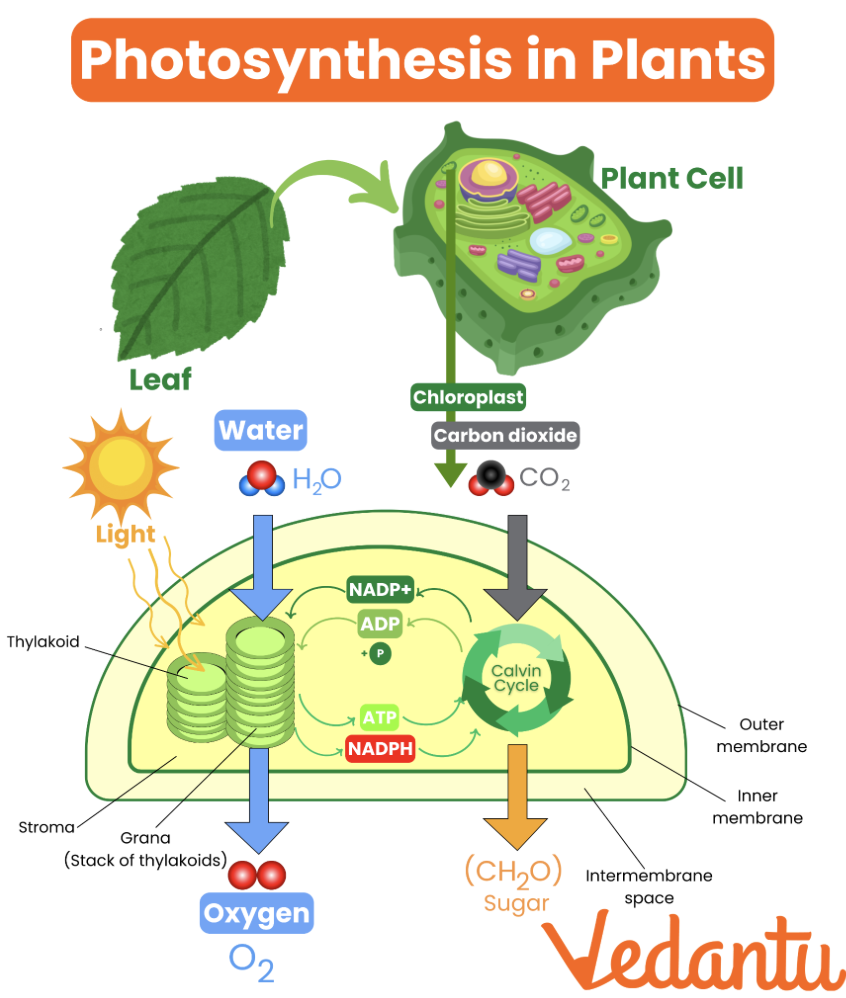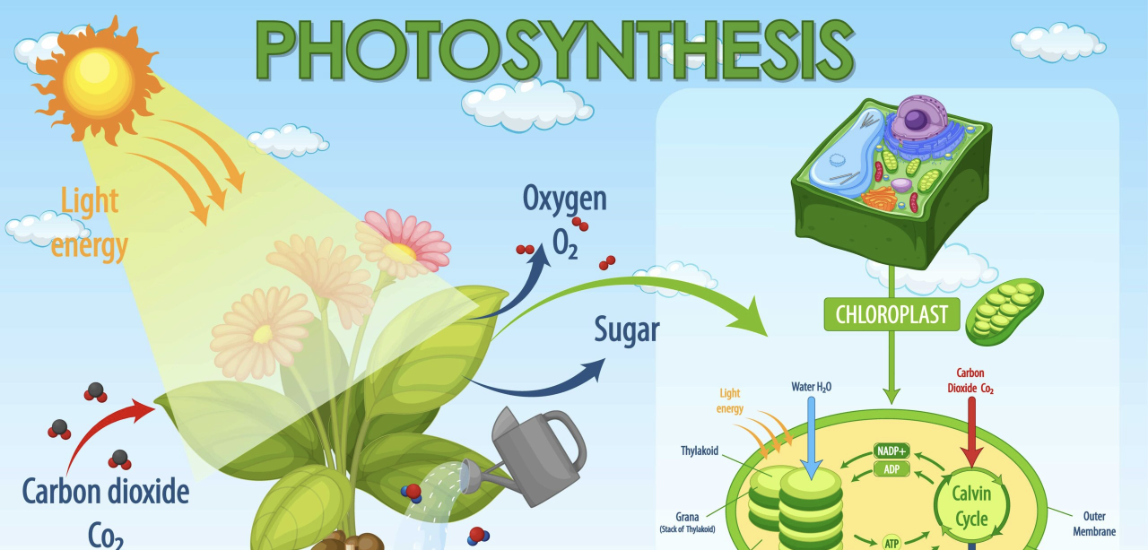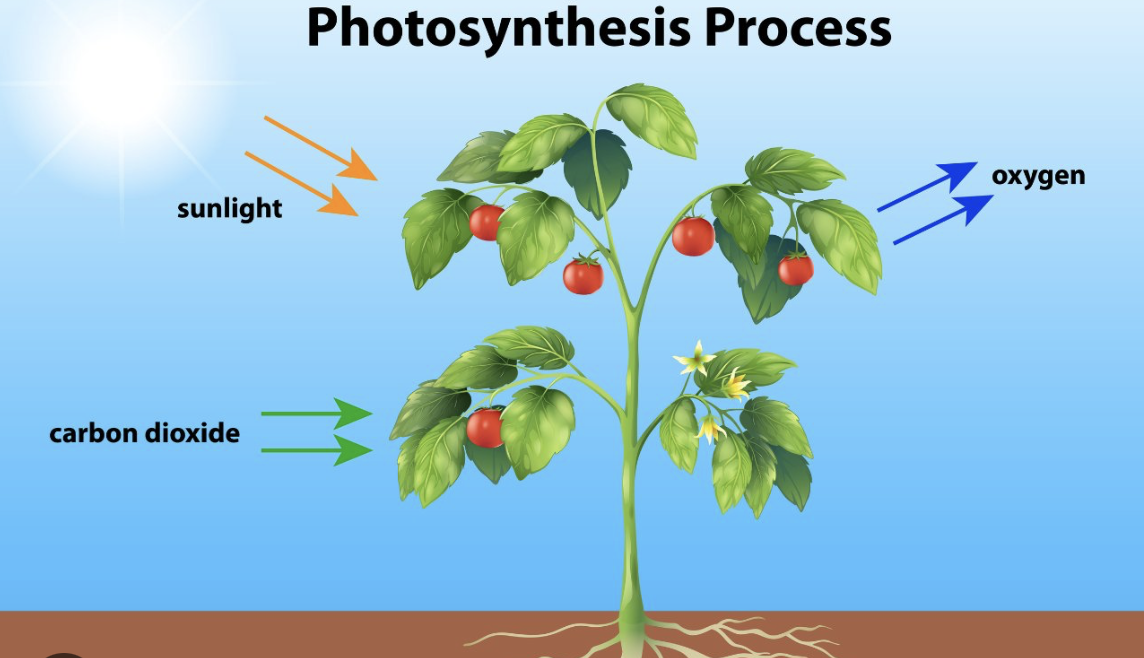Photosynthesis is a fascinating process that allows green plants, algae, and certain bacteria to turn light energy into chemical energy stored as glucose. Mainly occurring in the chloroplasts of leaves, this process is essential for life on Earth, providing energy to numerous ecosystems. Within the chloroplasts are thylakoids, where light-dependent reactions happen; these structures contain chlorophyll that absorbs specific wavelengths of light. The first stage produces ATP and NADPH while splitting water molecules and releasing oxygen. Meanwhile, in the stroma of the chloroplasts, carbon dioxide is transformed into glucose during the Calvin Cycle. Such processes underpin much of our planet’s vitality.

Photosynthesis is a remarkable process that transforms light energy into chemical energy, primarily in the form of glucose. This process is vital for sustaining life on our planet, as it forms the foundation of most food chains. It occurs mainly in the leaves of green plants, where specialised structures called chloroplasts are abundant. These chloroplasts house chlorophyll, the pigment responsible for capturing sunlight.
In essence, photosynthesis can be broken down into two main stages: the light-dependent reactions and the light-independent reactions, also known as the Calvin Cycle. During the light-dependent reactions, chlorophyll absorbs sunlight, leading to the production of energy-rich molecules like ATP and NADPH, alongside oxygen as a by-product from splitting water molecules. The Calvin Cycle then utilises this energy to convert carbon dioxide from the atmosphere into glucose, a simple sugar that plants use for energy and growth.
What’s fascinating is that while photosynthesis predominantly occurs in leaves, it can also take place in other green parts of plants, such as stems. This adaptability showcases the importance of chlorophyll and the process itself across various plant structures. Overall, photosynthesis not only sustains plants but also plays a crucial role in maintaining the Earth's atmosphere and supporting life by releasing oxygen and providing food.

Chloroplasts are the heart of photosynthesis in plants. These green organelles are primarily located in the mesophyll cells of leaves, where they play a crucial role in capturing light energy. Inside chloroplasts, the thylakoids contain chlorophyll, which absorbs sunlight, making these structures essential for the light-dependent reactions of photosynthesis. When light hits chlorophyll, it excites electrons, leading to the production of energy-rich molecules like ATP and NADPH. This energy is then used in the stroma of the chloroplasts during the Calvin cycle to convert carbon dioxide into glucose. Without chloroplasts, plants would be unable to harness solar energy, highlighting their importance not just for the plant itself but for all life on Earth.

Thylakoids are fascinating structures nestled within chloroplasts, where the magic of photosynthesis truly begins. These disc-shaped membranes are the site of light-dependent reactions, absorbing sunlight and converting it into chemical energy. When light strikes the chlorophyll molecules embedded in the thylakoid membranes, it excites electrons, setting off a chain reaction that produces ATP and NADPH, crucial energy carriers for the plant.
Imagine a bustling factory: the thylakoids are like assembly lines, efficiently processing light energy. They are stacked in structures known as grana, which maximises their surface area and enhances light absorption. During this process, water molecules are split apart in a reaction called photolysis, releasing oxygen as a by-product. This not only benefits the plant but also contributes to the air we breathe.
The efficiency of these reactions is influenced by various factors, including light intensity and wavelength. For instance, chlorophyll absorbs primarily blue and red light, which is why plants thrive in sunlight. The energy captured in the thylakoids is then transported to the stroma of the chloroplast, where it fuels the synthesis of glucose in the Calvin cycle. Thus, thylakoids play an indispensable role in harnessing solar energy, making them essential to life on Earth.

Chlorophyll is the vital green pigment found in the chloroplasts of plants and algae, playing a crucial role in the process of photosynthesis. Its primary function is to absorb light energy, which is then converted into chemical energy. There are two main types of chlorophyll: chlorophyll a and chlorophyll b. Chlorophyll a is essential for the light-dependent reactions, as it directly participates in the conversion of light energy into chemical forms. Chlorophyll b complements chlorophyll a by capturing additional light wavelengths, particularly in the blue and red spectra, which enhances the plant's ability to absorb sunlight.
The reason plants appear green is due to chlorophyll's selective absorption of light; it absorbs blue and red light but reflects green light. This reflexion is not merely a by-product but also a testament to the efficiency of photosynthesis. By optimally utilising various light wavelengths, plants maximise energy capture, essential for producing glucose—an energy source for growth and development. Moreover, chlorophyll's role extends beyond just energy absorption; it also contributes to the overall health of the plant. The presence of sufficient chlorophyll indicates robust photosynthetic activity, which is essential for plant vitality and productivity.
Photosynthesis unfolds in two main stages: the light-dependent reactions and the light-independent reactions, often referred to as the Calvin Cycle. The light-dependent reactions occur within the thylakoid membranes of chloroplasts. Here, chlorophyll absorbs sunlight, energising electrons that lead to the formation of ATP and NADPH, essential energy carriers. Water molecules are also split during this stage, a process known as photolysis, releasing oxygen as a by-product. This reaction not only provides energy but also contributes to the oxygen we breathe.
In contrast, the light-independent reactions take place in the stroma of chloroplasts. Here, ATP and NADPH generated from the light-dependent phase are utilised to convert carbon dioxide into glucose through a series of chemical reactions. This cycle is vital, as it transforms inorganic carbon into a form that can be used as energy by plants and, ultimately, by all living organisms. Understanding these stages highlights the intricate processes that sustain life on Earth.
Light Absorption: Chlorophyll absorbs sunlight, initiating the process.
Water Splitting: Water molecules are split into oxygen and hydrogen.
ATP and NADPH Formation: Energy carriers are produced from light energy.
Carbon Fixation: Carbon dioxide is captured and converted into glucose.
Sugar Production: Organic molecules are synthesised for energy.
Oxygen Release: By-product oxygen is released into the atmosphere.
Photosynthesis primarily occurs in the leaves of plants, specifically within the mesophyll cells. These cells are packed with chloroplasts, the organelles responsible for the photosynthetic process. Chloroplasts contain chlorophyll, the green pigment that plays a vital role in capturing light energy. While leaves are the main site for photosynthesis, it can also take place in other green parts of the plant, such as stems. For instance, certain plants like cacti can photosynthesise through their green stems, especially when their leaves are reduced or absent. This adaptation allows them to survive in arid environments where water is scarce. The efficiency of photosynthesis depends on the presence of chloroplasts, which are optimally located in areas exposed to sunlight, maximising light absorption for energy production.
Several factors significantly influence the rate of photosynthesis in plants. Light intensity is crucial; plants require a specific amount and quality of light for optimal photosynthesis. For instance, under low light conditions, the photosynthetic rate decreases, while too much light can be harmful, causing damage to the chlorophyll and leading to photoinhibition.
The concentration of carbon dioxide (CO2) is another vital factor. Higher levels of CO2 generally enhance the rate of photosynthesis, as it is a key ingredient in the formation of glucose. However, this effect plateaus once other factors, such as light or temperature, become limiting.
Temperature also plays a critical role, as the enzymes that facilitate photosynthesis function best within a certain temperature range. Extreme temperatures can slow down or even halt the process. For example, many plants thrive at temperatures between 20°C and 30°C, but temperatures above or below this range can negatively affect photosynthesis.
Lastly, water availability is essential. Water is not only a raw material for the light-dependent reactions but also helps maintain turgor pressure in plant cells. A lack of water can lead to stomatal closure, limiting CO2 intake and ultimately reducing the rate of photosynthesis. In summary, light, CO2 concentration, temperature, and water availability all interact to determine how effectively a plant can carry out photosynthesis.
|
Factor |
Description |
Impact on Photosynthesis |
|---|---|---|
|
Light Intensity |
The amount and quality of light available |
Directly influences the rate; optimal light levels are crucial. |
|
Carbon Dioxide Concentration |
Levels of CO2 in the atmosphere |
Increased CO2 can enhance the rate until other factors are limiting. |
|
Temperature |
Temperature sensitivity affecting enzyme activity |
Optimal temperatures promote higher rates of photosynthesis. |
|
Water Availability |
Essential for light-dependent reactions |
Adequate water is necessary for photosynthesis to occur. |
Quality tutoring can significantly enhance a student's understanding of photosynthesis, making complex concepts more accessible. Tutors at The Degree Gap provide tailored lessons that break down the intricate processes involved in photosynthesis, from the roles of chloroplasts to the light-dependent and light-independent reactions. For instance, a tutor might use visual aids to illustrate how chlorophyll captures light energy, helping students connect theory with visual representation.
Moreover, personalised tutoring allows students to explore real-world applications of photosynthesis. They can discuss how factors like light intensity and CO2 concentration affect plant growth, linking scientific principles to agricultural practises. This contextual learning not only boosts academic performance but also sparks a genuine interest in biology. With the right guidance, students are better prepared to tackle challenging topics and excel in their studies.
The Degree Gap offers tailored tutoring in GCSE and A-level Biology, making complex topics like photosynthesis more accessible. With a focus on individual learning styles, tutors engage students with clear explanations and practical examples. This personalised approach not only helps students understand the intricate processes of photosynthesis but also builds their confidence. For instance, students can explore how factors such as light intensity or carbon dioxide levels impact the rate of photosynthesis through interactive sessions. The tutors, having excelled in their own studies, serve as inspiring examples, guiding learners towards achieving their academic goals in biology.
Photosynthesis is the process by which plants, algae, and some bacteria convert light energy into chemical energy, using carbon dioxide and water. This process is crucial because it produces oxygen and organic compounds that serve as food for living organisms.
Photosynthesis mainly takes place in the leaves of plants, specifically in structures called chloroplasts, which contain chlorophyll that captures light energy.
Sunlight provides the energy needed for photosynthesis. The light energy is absorbed by chlorophyll, which then helps convert carbon dioxide and water into glucose and oxygen.
No, water is essential for photosynthesis. It is one of the reactants that plants need to produce glucose. Without water, the process cannot happen.
The rate of photosynthesis can be influenced by several factors, including light intensity, carbon dioxide concentration, and temperature. Optimal conditions enhance the process, while suboptimal conditions can slow it down.
TL;DR Photosynthesis is the process by which plants, algae, and some bacteria convert light into chemical energy, primarily occurring in chloroplasts within leaf cells. It involves two stages: light-dependent reactions in thylakoids, producing ATP and NADPH, and the Calvin Cycle in the stroma, converting CO2 into glucose. Key factors influencing photosynthesis include light intensity, carbon dioxide concentration, temperature, and water availability. Quality tutoring, such as that offered by The Degree Gap, can enhance understanding of these complex biological concepts.